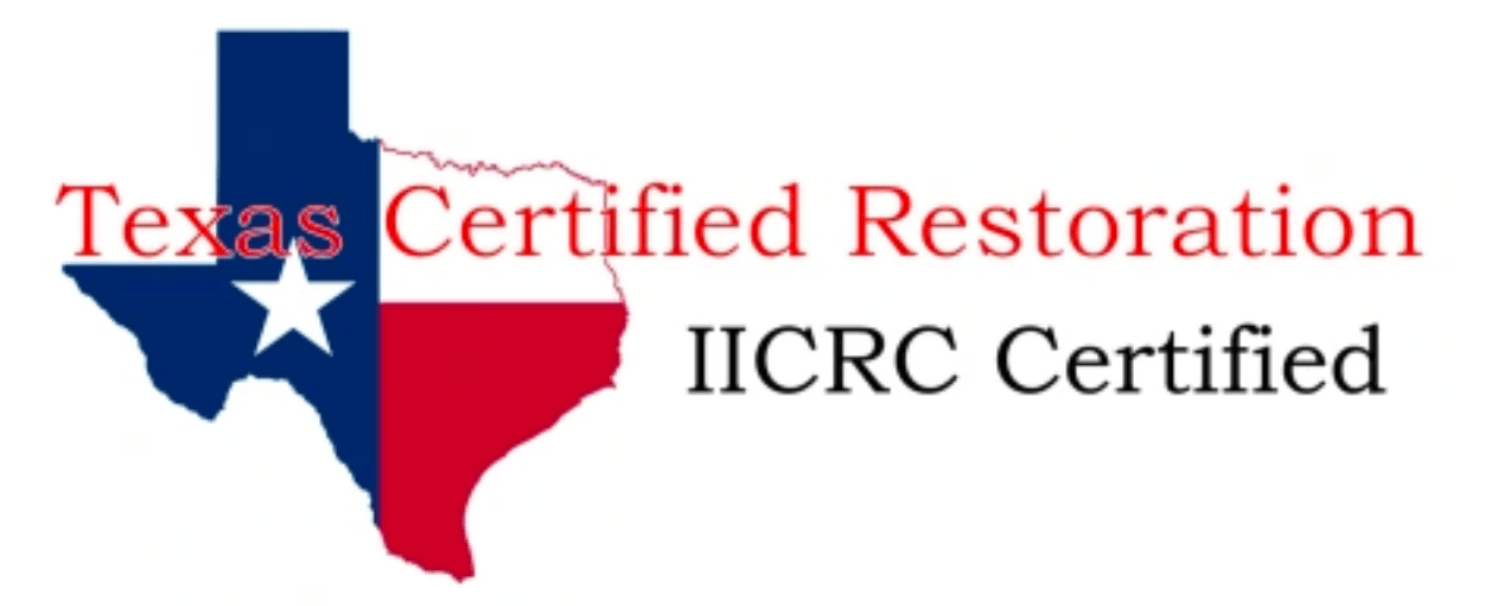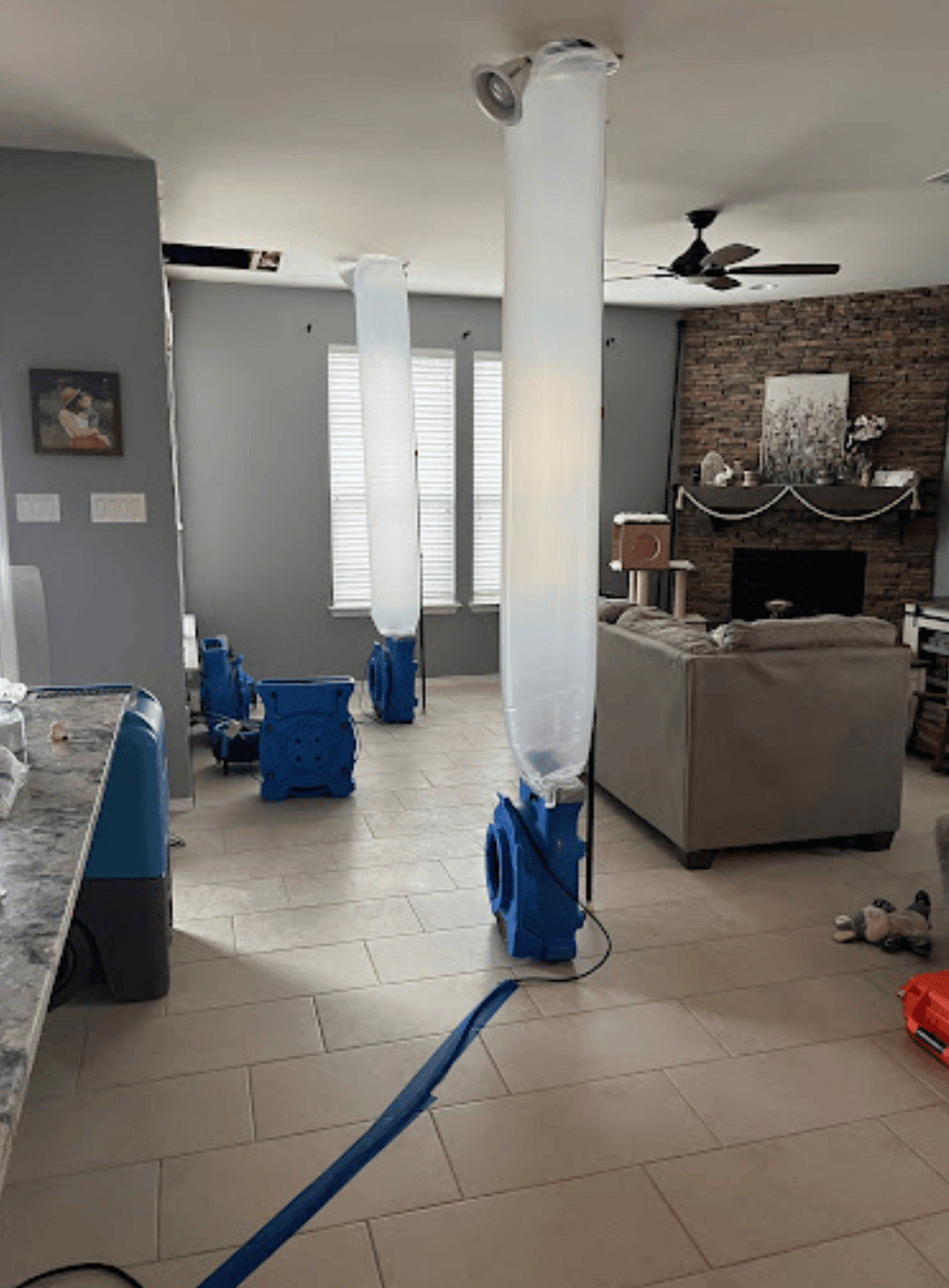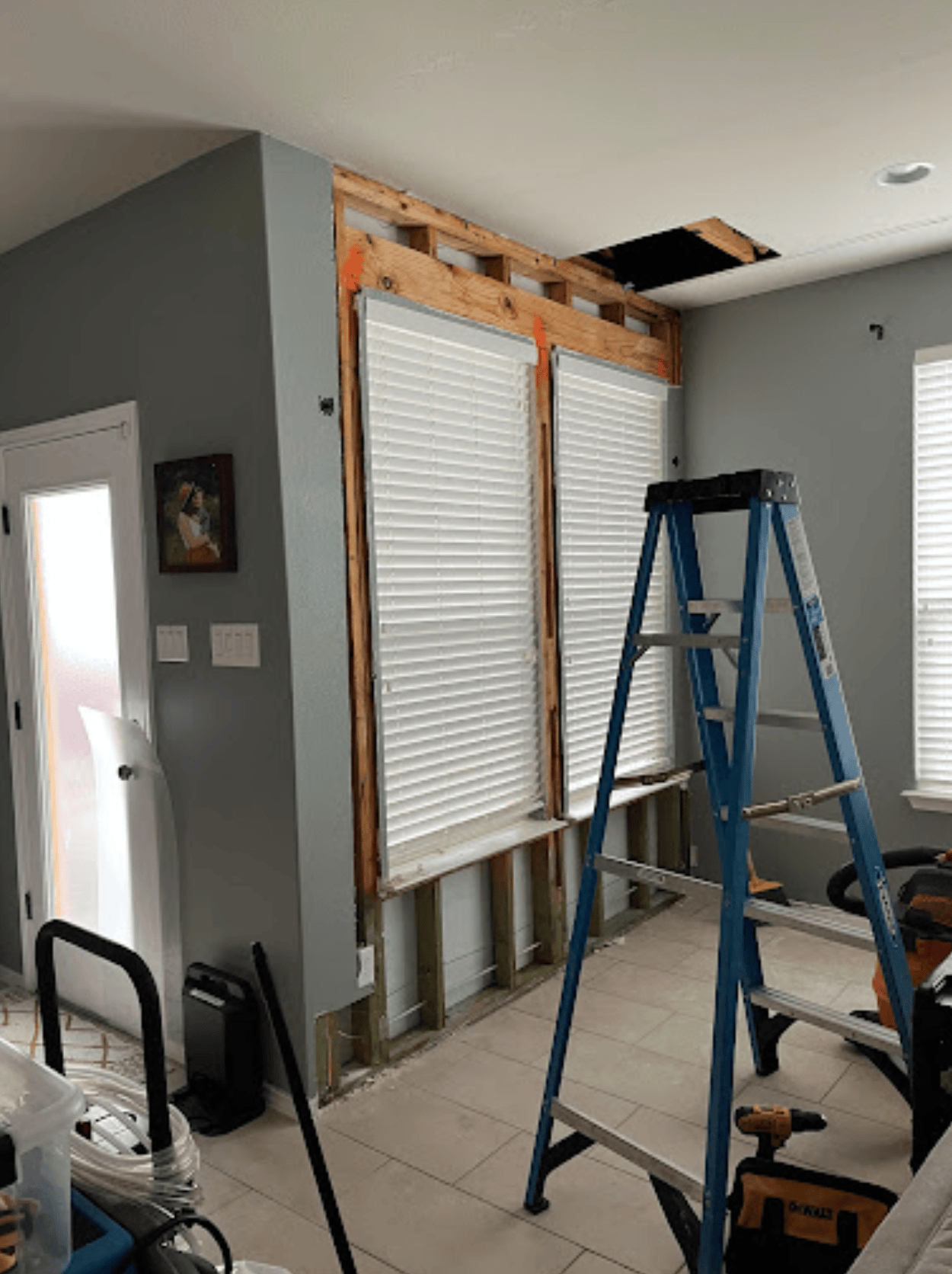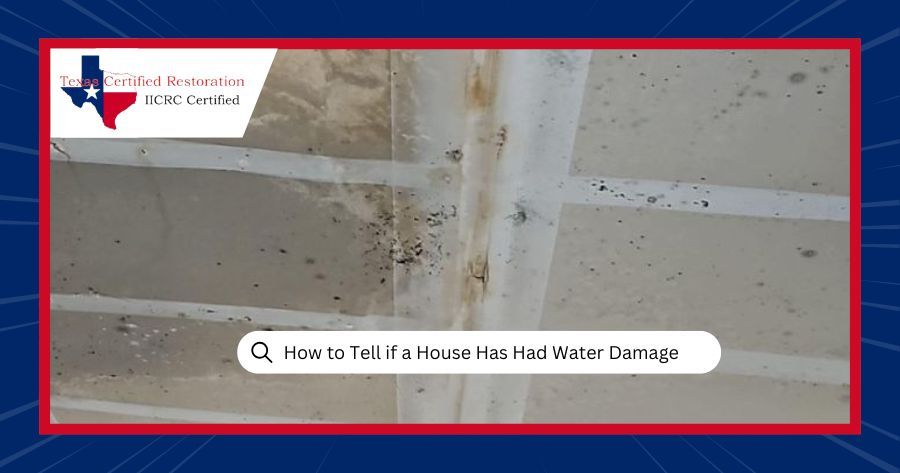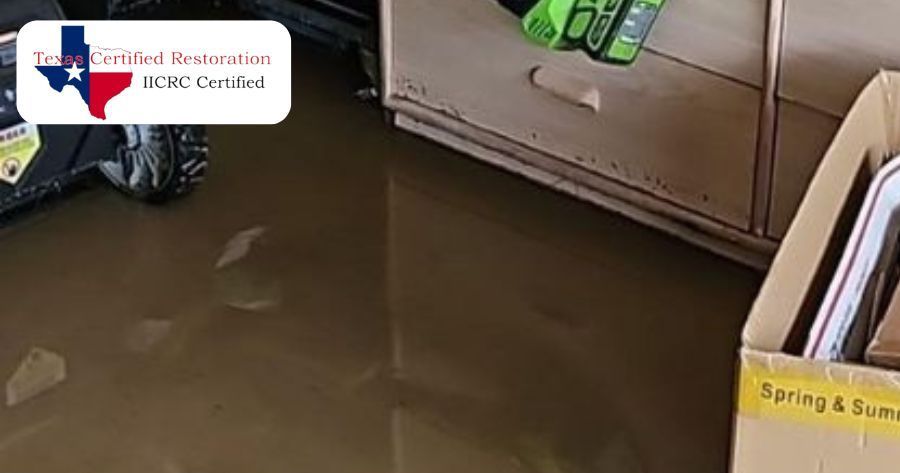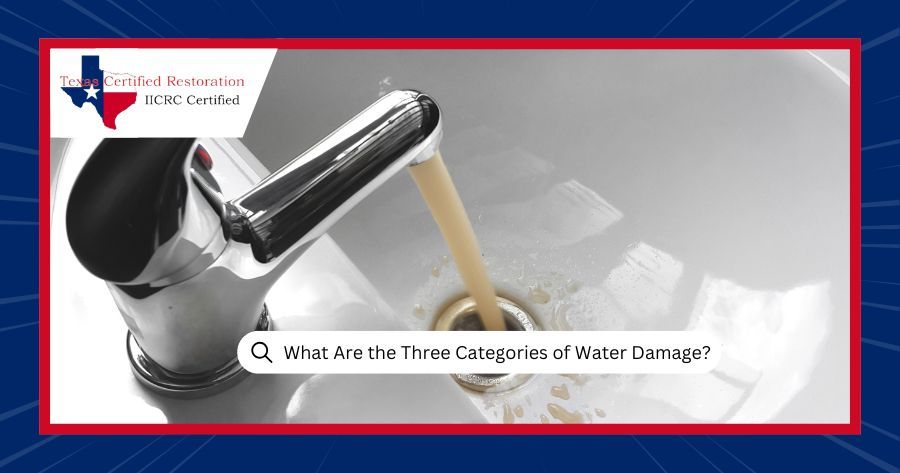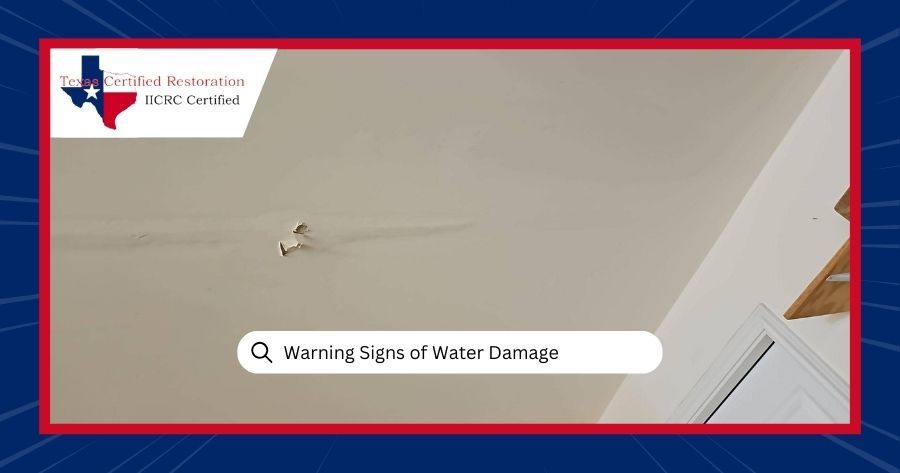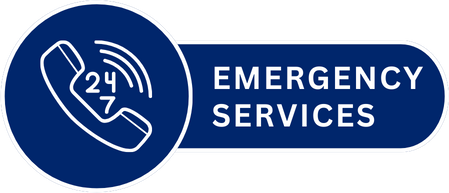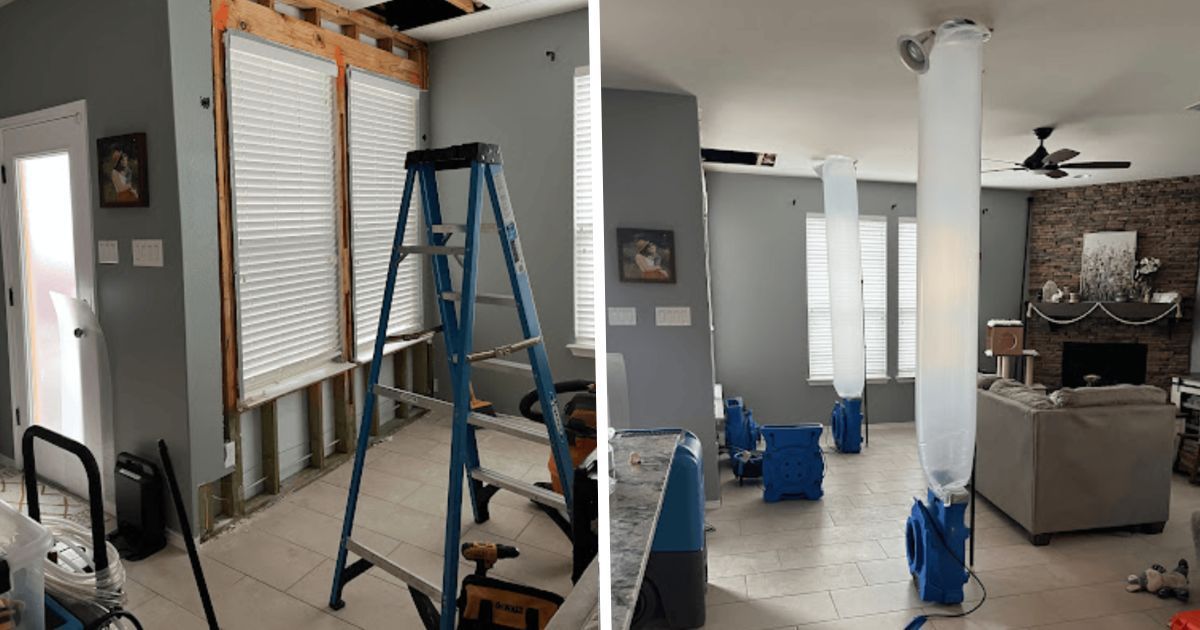
Ice Storm Ceiling Water Damage Job in Liberty Hill TX
Unfortunately, water damage is one of the most common emergency problems that homeowners have to face - and a problem with water can be a very stressful experience.
That’s because, quite often, they need to be urgently addressed in order to avoid damage to your building’s structure and your possessions. Mold, mildew and musty smells can be a major concern too.
Ice storms are common occurrences in Texas and can wreak widespread damage to properties. Common sources of water damage caused by ice storms include:
- Roof damage. When ice accumulates on a roof, it can cause damage to shingles or tiles, leading to leaks and water damage.
- Clogged gutters. Ice can collect in gutters and downspouts, causing them to become clogged and preventing proper drainage. This can result in water overflowing and damaging the exterior of a building.
- Burst pipes. Water pipes can freeze and burst during an ice storm, causing water to flood the interior of a building.
- Foundation cracks. When ice accumulates around the foundation of a building, it can cause cracks to form, allowing water to seep into the basement or crawl space.
- Falling tree branches. Ice accumulation can cause tree branches to break and fall, potentially damaging a roof or other parts of a building and allowing water to enter.
- Sump pump failure. Ice storms can cause power outages, which can lead to sump pumps failing and basements flooding.
- Melting and refreezing. As ice on roofs and gutters melts and refreezes, it can cause ice dams to form, which can prevent water from draining properly and lead to water damage.
Here, we take a look at a job that Texas Certified Restoration was called out to deal with following the recent ice storm in Texas.
Water damage to ceiling and internal wall
We received contact via our online form about a homeowner in Liberty Hill, Texas, who had experienced water damage to her ceiling and wall following the recent ice storm.
Within minutes we called her to set up an appointment for the following day.
Once on site and after ensuring that the leak had stopped, we had to assess how far the water had spread.
An initial visual inspection showed that water had passed into the room through the ceiling and into the wall surrounding two windows.
In order to stop mildew and mold growth in its tracks, unfortunately it’s very common to have to scrap and replace any water-damaged drywall, insulation, floorboards, carpets and baseboards.
In this customer’s case, the drywall, insulation and baseboard around the two windows had to be removed and disposed of.
Dehumidifiers and air movers to dry out the affected spaces
With the water-damaged parts removed, we used moisture meters to check the levels in the remaining parts of the ceiling and walls.
As the readings still showed that they were wet, we installed dehumidifiers and air movers (fans) to remove the moisture from the room and replace it with dry, warm air.
We dried the ceiling cavity by directing our machinery in through the spotlight holes.
In the majority of cases, mold and mildew development can practically be eliminated if you can finish drying out your water damage within three to four days.
In this case, after a couple of days, when the moisture meter readings showed below 16%, everything was dry again and restoration work could begin.
Then, once the water damage was remedied, we cleared out the equipment, swept and vacuumed and got out of the customer’s way, leaving the site as close as possible to its pre-storm condition.
Texas Certified Restoration, your local water damage restoration specialists
If you need professional help, don't hesitate to give water damage restoration professionals like Texas Certified Restoration a call!
Your residence and business are your most valuable assets. So, make sure you hire the best-skilled personnel to deal with the consequences of emergency water damage.
As moisture can creep into places you can't see or readily locate, employing experts with specialized equipment like moisture detectors, hygrometers and remote cameras can ensure that the job is done correctly.
Texas Certified Restoration is a water damage restoration company that offers emergency water damage cleanup in Greater Austin, Texas, around the clock.
Our team is available 24 hours a day, seven days a week, ensuring that we respond to your requests quickly.
We make sure to handle your property as though it were our own, maintaining the highest standards of professional quality and safety.
For emergency water damage restoration services in Greater Austin, Texas, contact Texas Certified Restoration at (512) 883-6760.

